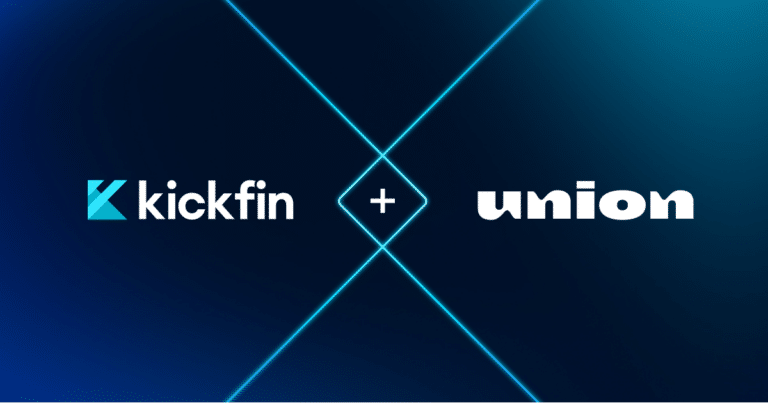A restaurant employee handbook is a document that outlines a restaurant’s policies, procedures, and expectations for your team. It’s an essential guide for owners, managers, and employees that clearly communicates information necessary for a restaurant to operate safely and efficiently.
In this article, we’ll review the steps required to create a practical and effective employee handbook for a safe, profitable restaurant.
What Is a Restaurant Employee Handbook?
A restaurant employee handbook is a comprehensive document that outlines the policies, procedures, and expectations for employees and managers in a restaurant business. It serves as a valuable resource for both new and seasoned staff members, offering a clear description of their roles, responsibilities, and the standards they’re expected to meet.
The purpose of an employee handbook is to establish clear safety practices and sound procedures for operating various aspects of a restaurant business. It is the go-to guide for the restaurant’s mission, values, and culture. Items covered in a handbook typically include dress code policies, guidelines for customer service, health and safety procedures, tips and gratuity policies, and procedures for reporting grievances or issues in the workplace.
Why Restaurants Need an Employee Handbook
Like any other business, restaurants use employee handbooks as a critical tool for managing employees and communicating expectations. A well-written handbook is an ideal way to articulate the company’s objectives, culture, and values. Furthermore, it provides clear guidelines on how to conduct oneself in various situations, minimizing misunderstandings and helping to ensure all of a restaurant’s employees and managers are on the same page and working towards common goals.
Additionally, an employee handbook serves as a reference for legal issues and disputes such as fair treatment, equal opportunity employment, and harassment policies. This protects the employer and the employees by outlining their rights and responsibilities. Such a guide helps ensure smooth operation, improves employee morale, boosts productivity, and contributes to the restaurant’s overall success.
Sections to Include in a Restaurant Employee Handbook
A restaurant employee handbook is an essential communication tool for restaurant owners and employees. A well-written and comprehensive employee handbook can be an effective tool for onboarding and maintaining a satisfied and informed staff. These are some of the main sections to include in a restaurant employee handbook:
Welcome and Restaurant History
Most employee handbooks start with an introduction to the business and an overview of the restaurant’s journey. These items serve as a welcome to new team members and convey appreciation for joining the restaurant’s team. This section should also review the restaurant’s history, including significant milestones and the vision for the business. It should discuss the restaurant’s culture and values, touching upon its mission and the standards it wants to meet.
Policies and Procedures
Next, a restaurant employee handbook should set forth various policies and procedures that employees must follow. These include punctuality, attendance, dress code, and behavioral expectations. The handbook should also describe how to call in sick, request time off, and follow scheduled break times. Customer service standards, food safety, and cleanliness policies should be clearly defined. This section should also include the restaurant’s policy on tip sharing, handling cash, and what constitutes acceptable and unacceptable behavior in the workplace.
Remember, the aim here is to foster a culture that embodies the restaurant’s values and promotes a safe, respectful, and professional environment. Providing clear guidelines helps to eliminate ambiguity and sets clear expectations for all employees, including managers.
Employee Dress Code
The dress code section is a crucial part of the restaurant employee handbook as it details the appearance standards employees are expected to maintain. This section should clearly outline the restaurant’s specific dress code, whether it requires uniforms, guidelines on acceptable casual wear (if allowed), or formal attire. It should also provide information about required accessories, such as name tags, aprons, or specific footwear.
This section may additionally cover policies concerning personal hygiene, tattoos, piercings, and other aspects of personal presentation that could impact an employee’s professional appearance.
A well-dressed, neat employee makes a positive impression, reflecting the restaurant’s commitment to professionalism and high standards. Furthermore, roles involving food handling, hygiene, and cleanliness are not just about making a good impression—they’re vital for maintaining food safety standards.
Employee Conduct
The employee conduct section should clearly outline the codes and ethics governing each employee’s actions. This section might include guidelines about maintaining a positive and respectful attitude towards coworkers, supervisors, and customers and rules against workplace harassment, discrimination, or any other form of misconduct. It can also cover honesty, integrity, confidentiality, and adherence to the restaurant’s policies and procedures. This section can address the fact that alcohol and drug use are not tolerated in the workplace due to their potential to impair employee performance and jeopardize safety.
The employee conduct section lets you set your restaurant’s behavioral standards and cultural tone. It’s essential to laying the foundation for a respectful and harmonious workplace environment. Outlining the consequences of not adhering to these guidelines also provides a measure of disciplinary control, ensuring each employee is aware of the potential ramifications of failing to meet the standard you set.
Compensation and Benefits
The compensation and benefits section of the restaurant employee handbook should detail the remuneration employees can expect and the benefits provided. This section should clearly explain the pay structure, including the frequency and method of payment, such as whether it’s hourly or salaried and whether payments are made weekly, bi-weekly, or monthly. The handbook should also include information about overtime pay, holiday pay, or other special pay rates (if applicable). The restaurant’s policy on tips—whether they are shared, pooled, or given directly to individual servers—should also be clearly laid out.
Additionally, this section should outline the benefits offered by the restaurant, such as healthcare plans, retirement options, meal discounts, paid time off, and any other employment perks. Also, clearly explain the eligibility criteria and processes necessary to obtain these benefits.
Health and Safety Guidelines
The health and safety guidelines are some of the most essential items in a restaurant employee handbook as they ensure the well-being of the staff and patrons. This section should emphasize the restaurant’s commitment to providing a safe and healthy work environment. It should detail measures to prevent accidents, such as keeping walkways and workspaces clear of hazards and correctly storing and using equipment. It should also include guidelines for the following:
- Food safety: Describe applicable food safety regulations to prevent foodborne illnesses, like correct food handling, storage, and preparation, personal hygiene standards, and procedures for cleaning and sanitizing equipment and surfaces.
- Handling of alcohol: If the restaurant serves alcohol, include guidelines on responsible service, including checking identification and refusing service to intoxicated patrons.
- Emergencies: Dedicate a portion of this section to emergency procedures, including what to do in case of fire, injuries, or other urgent situations. Include clear instructions on how to use fire extinguishers, the location of first-aid kits, and the protocol for reporting accidents or injuries. This section should also outline the restaurant’s policy on handling health-related issues, such as what to do if an employee is sick or suspects they have contracted a contagious disease.
Equal Opportunity and Anti-Discrimination Policies
This section should outline the restaurant’s commitment to providing equal employment opportunities regardless of race, color, religion, gender, sexual orientation, age, marital status, national origin, or disability. It should clearly state that discrimination is unacceptable and will result in disciplinary action. It should also provide information on how to report incidents of discrimination or harassment and the steps taken by the restaurant to address such issues. This section should align with federal and state employment laws and promote a workplace culture of diversity, inclusion, and fairness.
Communication Policy
An employee handbook should also include a section outlining times and methods of communication between employees, supervisors, and management. It should outline the procedures for addressing grievances or concerns without fear of retaliation. It should promote transparency, trust, and a healthy work environment where management can address problems promptly and effectively.
Tips for Writing a Restaurant Employee Handbook
Creating a restaurant employee handbook is essential to establishing a well-structured and smoothly operating restaurant business. Here are some tips to ensure your restaurant employee handbook is practical and user-friendly:
- Make it comprehensive but concise. A good handbook covers all necessary topics but avoids unnecessary complexity. Use clear and concise language to ensure the information is easy to understand and digest.
- Use a positive tone. Even though the handbook contains rules and regulations, strive for a positive tone. Doing so will help your employees feel welcome and valued rather than overburdened by numerous rules and policies.
- Comply with legal requirements. Ensure your handbook complies with all local, state, and federal laws. Consult an attorney if you’re unsure about any particular items or sections.
- Include visuals when possible. Photos, diagrams, and infographics can make your handbook more engaging and easier to understand, especially when addressing things like safety procedures or the proper handling of equipment.
- Regularly update the handbook. Laws and restaurant policies can change, so update your handbook regularly.
- Encourage feedback from employees. Let your employees know that their feedback on the handbook is welcome. This can help you identify any areas that may need clarification or improvement.
Your restaurant employee handbook is vital in communicating with your staff. A good handbook can foster a positive work environment where everyone understands their roles, rights, and responsibilities, making it easier to train employees and reducing unnecessary turnover among your staff.






